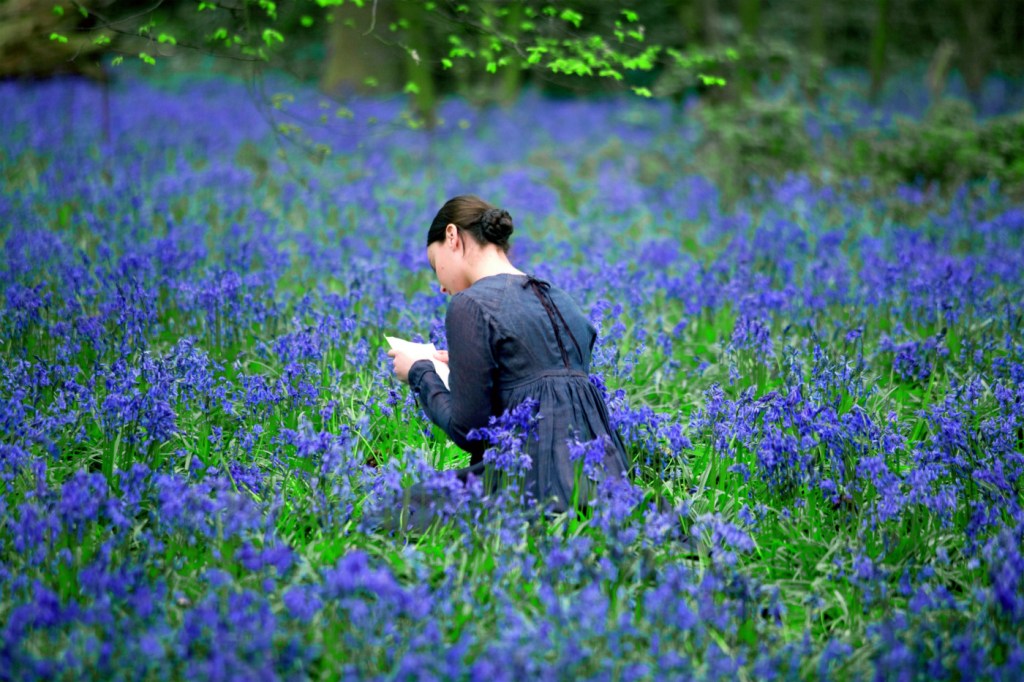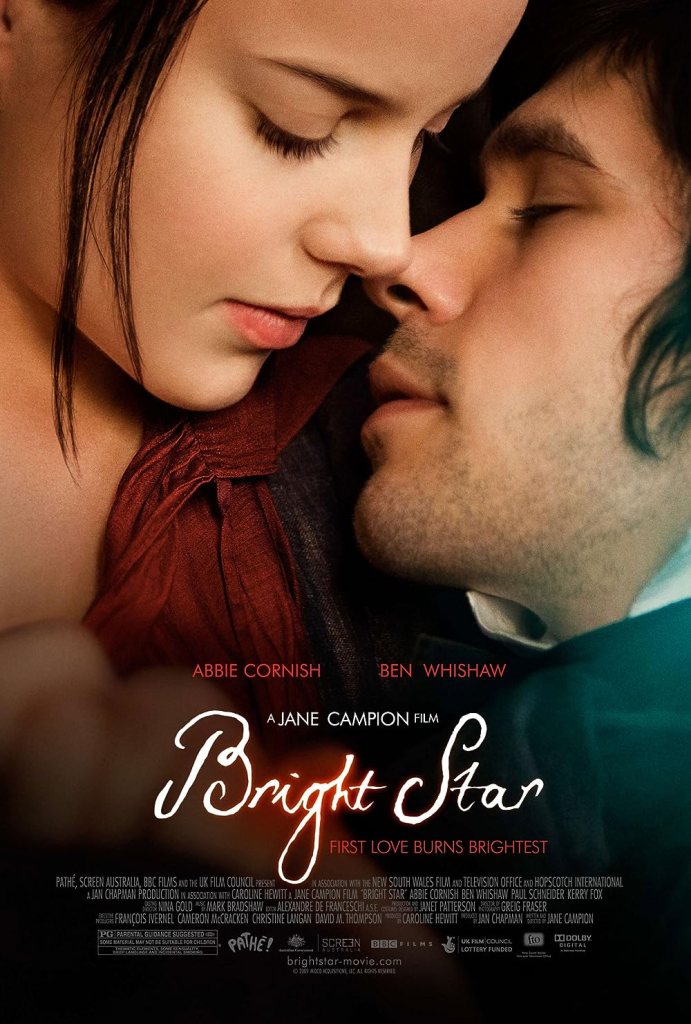Synopsis – Nineteenth-century English poet, John Keats and his dressmaking neighbour, Fanny Brawne, have total disregard for each other. An unlikely romance develops and they fall deeply in love with each other.
Director – Jane Campion
Starring – Ben Whishaw, Abbie Cornish, Paul Schneider
Genre- Romance | Drama | Historical
Released- 2009
Directed by Jane Campion, “Bright Star,” offers a visually stunning portrayal of the romantic relationship between the renowned English poet John Keats and his muse Fanny Brawne. Set in the early 19th century, the film beautifully captures the period’s aesthetics and the poetic essence of Keats’s work. However, despite its artistic merits, “Bright Star” falls short in certain aspects.

The film excels in cinematography, with Campion skillfully crafting each frame to evoke the ethereal beauty that Keats often described in his poetry. The lush landscapes and period-appropriate costumes contribute to a visually captivating experience. The attention to historical detail is commendable, immersing the audience in 19th-century England. Campion’s decision to focus on the intimate moments between Keats and Brawne provides a delicate and heartfelt portrayal of their love story.
The performances in “Bright Star” are noteworthy, particularly those of Ben Whishaw as John Keats and Abbie Cornish as Fanny Brawne. Whishaw brings a quiet intensity to the role, effectively conveying Keats’s passion for poetry and love for Brawne. Cornish, in turn, delivers a nuanced performance as a headstrong and independent woman who becomes enamoured with Keats. The chemistry between the leads is palpable, adding authenticity to their on-screen relationship.

The film’s soundtrack, composed by Mark Bradshaw, complements the romantic narrative with its emotive and atmospheric score. The music enhances the emotional resonance of key scenes, further immersing the audience in the film’s poetic ambience. The careful selection of Keats’s poetry as a backdrop to the narrative serves as a poetic thread, connecting the film to the essence of the poet’s work.
However, “Bright Star” struggles with pacing issues, particularly in the middle of the film. The slow progression may test the patience of some viewers, as the narrative unfolds at a leisurely pace. While the emphasis on the minutiae of daily life contributes to the authenticity of the setting, it occasionally detracts from the overall momentum of the story.

Additionally, the film’s focus on the romantic aspect of Keats and Brawne’s relationship may leave some viewers wanting more exploration of Keats’s poetic process and the socio-political context of the time. A deeper exploration of these elements could have added layers to the narrative and provided a more comprehensive understanding of Keats’s life and work.
In conclusion, “Bright Star” is a visually enchanting film that successfully captures the essence of John Keats’s romantic poetry. The stellar performances and meticulous attention to period detail contribute to the film’s overall appeal. However, pacing issues and a somewhat narrow focus on the romantic narrative prevent it from scoring higher. Despite these shortcomings, “Bright Star” remains a poetic and visually striking depiction of one of history’s most celebrated love stories.


Leave a comment